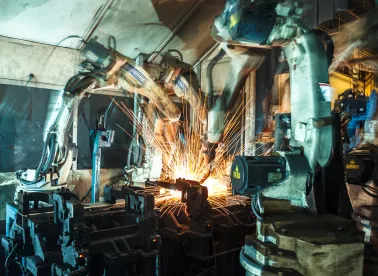Over the past few years, the National Highway Traffic Safety Administration (NHTSA), the primary regulator of motor vehicles and motor vehicle equipment and their manufacturers, has been balancing its work of keeping pace with technology innovations against its work on compliance enforcement. As the Biden administration begins to take shape, the priorities of the U.S. Department of Transportation and NHTSA will shift to reflect the regulatory philosophy and priorities of the new administration. This change in administrations offers some particularly interesting differences, as NHTSA spent the entirety of the Trump administration without an administrator. One focus of the Biden administration will likely be changing environmental policies, which almost certainly will lead to another round of changes to the fuel economy standards.
With respect to safety standards and enforcement focuses, the incoming administration has, to this point, offered little indication as to what its focus will be. It has instructed all agencies to withdraw rules that have not been published in the Federal Register so that the rules may be reviewed and approved by the new administration’s political appointees at the respective departments or agencies. See https://www.whitehouse.gov/briefing-room/presidential-actions/2021/01/20/regulatory-freeze-pending-review/. Additionally, agencies have been instructed to cease sending rules to the Federal Register until the administration’s political appointees have reviewed and approved the rules, to postpone for 60 days the effective date of any published rule that had not taken effect prior to January 20, 2021, and to comply with all executive orders, including orders issued by the new administration. These instructions indicate that the new political team at NHTSA, once in place, will take a fresh look at the agency’s recent activities.
Modernizing NHTSA’s Regulations
Over the past two years, NHTSA issued a flurry of advanced notices of proposed rulemakings (ANPRMs) and proposed rulemakings (NPRMs) to amend federal motor vehicle safety standards (FMVSSs) aiming to reduce regulatory barriers and modernize performance requirements to facilitate the development and deployment of advanced technologies. As outlined in the DOT’s policy statements issued during the Trump administration, the driving principles of this barrier reduction and modernization have been to:
-
Prioritize safety, cybersecurity, privacy and data sensitivity, and accessibility;
-
Promote innovation by remaining technology neutral and protecting U.S. intellectual property; and
-
Ensure a regulatory approach that uses consistent standards and policies across the federal government.
During the closing days of the Trump administration, NHTSA released several notices that look to meet these goals.
The First General Exemption for an Automated Vehicle
In February 2020, NHTSA granted Nuro, Inc.’s petition for temporary exemption from three requirements in FMVSS 500, Low-speed vehicles. The exemption marked a significant moment for automated vehicles (AVs) as the agency’s exemption permitted Nuro’s R2X, a highly automated (SAE Level 4), low-speed vehicle (25 mph maximum speed), to be sold in the United States. The R2X is designed to carry exclusively cargo and operates without a human driver.
Significantly, the R2X is the first AV exempted under NHTSA’s general exemption authority. As a condition of the exemption, NHTSA established a number of reporting and other terms of deployment for the vehicles – violation of which could result in NHTSA terminating the temporary exemption. These conditions include:
-
Post-crash reporting;
-
Periodic reporting requirements;
-
Particular cybersecurity requirements;
-
Nuro must remove from operation any vehicle it determines is not safe;
-
The vehicles must comply with all state and local laws;
-
Nuro must retain ownership of the vehicles; and
-
Nuro must provide a hotline for safety concerns.
These terms are similar to terms the agency has imposed on noncompliant AVs that were imported under the 49 CFR Part 591 temporary exemption for research and demonstration purposes.
Granting the Nuro exemption, with the additional conditions, provides a look at how the agency may respond to similar exemption petitions in the future. Due to the low speed and lack of passengers, the burden on Nuro to demonstrate “safety equivalence” is lower than it would be for a vehicle that will carry passengers. Similarly, low-speed vehicles subject to FMVSS 500 are subject to fewer performance requirements than conventional motor vehicles. In comparison, NHTSA has not yet resolved a similar exemption petition by General Motors for a passenger AV based upon the Chevy Bolt, which was submitted to NHTSA in 2018. The greater complexity of passenger AVs in terms of safety equivalence, along with the greater number of performance requirements that apply to traditional (i.e., non-low-speed) vehicles, understandably present more difficult challenges for the agency. (Late last year, GM withdrew its petition for the earlier generation of Cruise AVs and stated that it would be submitting a new petition for a limited number of Cruise Origin vehicles in the coming months.)
Special Exemptions for Noncompliant Vehicles for Research and Demonstration
In December 2020, NHTSA announced that it had submitted to the Federal Register an interim final rule that would extend the exemptions for noncompliant vehicles under 49 U.S.C. § 30114(A) for research and demonstration purposes to domestically produced vehicles. For many years, NHTSA’s regulations limited exemptions under Section 30114(A) to imported vehicles, thus creating an uneven playing field between foreign and domestically produced vehicles.
The Fixing America’s Surface Transportation (FAST) Act of 2015 added 49 U.S.C. § 30112(b)(10), which permits legacy manufacturers (i.e., manufacturers of FMVSS-certified vehicles as of December 2015) to operate domestically produced, nonconforming vehicles on public roads for testing purposes. But this provision is not available to manufacturers and developers that did not qualify as legacy vehicle manufacturers.
With the development of AVs, NHTSA believes that “creating a parallel special exemption program for domestically manufactured vehicles and equipment is warranted.” Accordingly, the interim final rule would create Part 589 to enable manufacturers and other entities to seek temporary exemptions for domestically produced vehicles and equipment for research and demonstration purposes, thus providing a critical pathway for nonlegacy vehicle manufacturers, developers, and suppliers to conduct on-road testing of prototype vehicles and systems.1
The interim final rule was signed by NHTSA’s deputy administrator on December 31, 2020, but, as of January 27, 2021, has not been published in the Federal Register. Accordingly, the new administration’s team at the U.S. DOT and NHTSA will need to review and approve it before it can be published in the Federal Register and become effective.
NHTSA’s Interpretation Regarding Certification to FMVSS
On December 21, 2020, NHTSA published a notice of interpretation to provide guidance to manufacturers on applying FMVSS test procedures to nontraditional vehicles and equipment. 85 Fed. Reg. 83143 (Dec. 21, 2020). In the interpretation, NHTSA reaffirmed its position that manufacturers are not required to use the test procedures contained in the FMVSS when certifying compliance with that particular standard. The interpretation expanded on this long-held interpretation by further explaining that the certifying manufacturer does not need to ensure that the vehicle’s equipment or design permits NHTSA to verify the certification using the test procedures in the applicable safety standard. The agency explained that if the manufacturer exercised reasonable care in determining compliance, it may so certify, “even if the vehicle were designed in such a way that the FMVSS test conditions and procedures cannot be performed.” Id. at 83147. Where the test conditions and procedures cannot be performed, NHTSA would exercise its investigative authority to review the manufacturer’s basis for certification, such as evaluating the alternative test procedures, simulations, and models used to make the certification as well as other salient factors the manufacturer relied upon in making its determination.
Amendments to the 200-Series FMVSS
On January 13, 2021, NHTSA’s deputy administrator signed a final rule amending portions of the 200-Series FMVSS (the crashworthiness standards) to remove barriers for AVs that lack traditional manual controls necessary for human drivers. The final rule is the result of multiple Federal Register notices, public discussions with stakeholders, and a March 2020 notice of proposed rulemaking (NPRM). The notice, if it proceeds to a final rule under the Biden administration, would create increased opportunities for certain AVs by updating and adding definitions within the 200-Series standards, modifying the application sections of several standards (for example, stating that FMVSS 203, Impact protection for the driver from the steering control system, and FMVSS 204, Steering control rearward displacement, do not apply to vehicles without steering controls), and adjusting spatial references in procedures that rely on traditional vehicle controls that may not exist in AVs. The final rule would also exclude AVs that are designed exclusively to carry property from existing crashworthiness requirements.
Because this notice has not been published in the Federal Register, the final rule is subject to further review and approval by the Biden administration. While the regulatory priorities of the new administration will come into focus as political appointees join NHTSA, the career staff at NHTSA who conducted the work on these proposals remain with the agency. Moreover, the proposed changes are the culmination of several years of work between various stakeholders and NHTSA’s staff. Any future regulatory actions by the new administration would likely build on the work already completed.
Updates to the New Car Assessment Program
NHTSA also released an unpublished Federal Register notice that would request comments related to proposed changes to its New Car Assessment Program (NCAP). The notice, if ultimately published, would implement four additional advanced driver assistance systems (ADAS) that NHTSA believes show potential for advancing vehicle safety and further reduce deaths and injuries from vehicle crashes. The notice would include pedestrian automatic emergency braking (PAEB), lane keeping support (LKS), blind spot warning (BLS), and blind spot intervention (BSI) systems in NCAP. NHTSA explained that it planned to include these technologies because they “meet NHTSA’s four prerequisites used for considering technologies in NCAP: (1) the technology addresses a safety need; (2) system designs exist that can mitigate the safety problem; (3) the technology provides the potential for safety benefits; and (4) a performance-based objective test procedure exists that can assess system performance.” Citing 73 Fed. Reg. 40016 (Jul. 11, 2008), 78 Fed. Reg. 20597 (Apr. 5, 2013), 80 Fed. Reg. 78521 (Dec. 16, 2015). In addition, the notice will seek public comments on NCAP test procedures for a number of other ADAS functions, including forward collision warning (FCW), lane departure warning (LDW), crash imminent braking (CIB), and dynamic brake support (DBS).3
Manufacturers should keep abreast of the ADAS technologies included in NCAP, as the agency may incorporate what it learns in developing these tests into future safety standards, as NHTSA did prior to adopting FMVSS 126, Electronic stability control systems for light vehicles. Additionally, these technologies likely present many of the technological building blocks of more advanced systems that will comprise automated vehicles. Ensuring that NHTSA’s research and testing of these foundational technologies remains objective, repeatable, and technology neutral will help ensure that in the future any potential safety standards related to these technologies will not be hampered by faulty assumptions, dependence of specific technologies, and repeatability problems that could create regulatory barriers to advanced vehicle technologies and vehicle automation.
Cybersecurity Best Practices
As vehicles and vehicle equipment become increasingly connected, ensuring the security of these systems will continue to play an important role in product development and maintenance. NHTSA recently released a “draft” update to the agency’s “nonbinding and voluntary guidance to automotive industry for improving motor vehicle cybersecurity.” Outlining “General Cybersecurity Best Practices,” the guidance favors a layered approach to cybersecurity structured around the principle functions “Identify, Protect, Detect, Respond, and Recover.” The agency believes the approach should:
-
Use risk-based priorities to identify and protect safety-critical vehicle control systems;
-
Where possible and feasible, eliminate risks to safety-critical vehicle control systems;
-
Timely detect and rapidly respond to potential incidents in the field;
-
Design methods and processes to facilitate rapid recovery from incidents; and
-
Share lessons learned across the industry through effective information sharing, such as by participating in the Auto-ISAC.
The guidance reflects the agency’s belief that suppliers and manufacturers should create a culture of security and data privacy throughout their organizations. A key to this cultural approach is to demonstrate to all levels of the organization the seriousness of effectively managing cybersecurity risks. The agency believes that effective and appropriate cybersecurity requires manufacturers and developers to look to securing systems through the full lifecycle of the vehicle – conception, design, manufacture, sale, use, maintenance, resale, and decommissioning.
Although this guidance is nonbinding and voluntary, the agency would likely use these principles in evaluating the safety-relatedness of cybersecurity issues in the event of a defect investigation. Manufacturers should ensure that they can demonstrate these priorities in the event of an investigation. Suppliers should also be mindful of these principles and work with their customers to reconcile their approaches to cybersecurity and to ensure they are using state-of-the-art methods and procedures.
Automated Vehicle Legislation
In 2019, promising progress on AV legislation was made by staff from the Senate Commerce Committee and the House Energy and Commerce Committee, who led a bipartisan, bicameral effort to draft legislation. The 2020 pandemic and election seemingly halted any progress in this area. While passing AV legislation could reap significant benefits to the automotive industry by avoiding the patchwork of state vehicle regulations, it is unclear whether or when the new Congress would continue the work that has already been done.
Some of the issues that the effort looked to address, such as expanding exemptions for testing vehicles that are not certified as meeting all applicable FMVSSs, would become moot in the event the new NHTSA administrator publishes rulemakings NHTSA made public at the end of the Trump administration. How these planned actions by NHTSA may influence the new Congress will likely come into focus as the Biden administration determines how it will handle the unpublished and postponed rulemakings.
NHTSA Enforcement
NHTSA’s enforcement activities remain robust, as recent consent orders between NHTSA and several major vehicle manufacturers demonstrate. These consent orders reflect NHTSA’s continuing efforts to forcefully police violations and leverage its civil penalty authority to violators into full compliance. These consent orders demonstrate that compliance with all of the various NHTSA reporting obligations, such as timely submission of complete and accurate information for recall-related reports and notifications, Early Warning Reports (EWR), foreign recall reports, and external communications (e.g., TSBs, etc.) remain important enforcement areas. The agency has the authority to stack up violations (regardless of how minor) to increase the penalty amount. For recall documents, NHTSA has increasingly used automated software audits to ensure that manufacturers’ filings are complete and to issue follow-up inquiries to manufacturers whose reports contain gaps. A few minor slip-ups may not lead to an enforcement action. But NHTSA does track these issues, and a history of seemingly lax compliance can quickly undermine a manufacturer’s reputation with NHTSA, raising the risk of an investigation.
To reduce their enforcement risk, it is critical that manufacturers ensure that their internal safety evaluation and reporting procedures are up to date and that key personnel are properly trained to identify and escalate potential safety defects and other potentially reportable events. These procedures should also include a process for confirming that all filings are timely and complete, and that amendments or updates to reports are timely submitted. Periodically auditing recall submissions to ensure that they are complete may be useful to ensure that current recall procedures are meeting NHTSA’s expectations. Manufacturers should address any deficiencies identified during these internal audits and update policies and training as necessary.
---------------------------------------------------------
1 Notably, manufacturers of vehicles that meet the requirements of § 30112(b)(10) can continue to rely on that statutory exception, rather than using the Part 589 special exemptions.
2 CIB and DBS are often grouped together under the more generic term automatic emergency braking (AEB). Twenty vehicle manufacturers have agreed voluntarily to equip virtually all new vehicles with low-speed AEB that includes FCW by September 1, 2022. https://www.nhtsa.gov/press-releases/nhtsa-announces-update-historic-aeb-commitment-20-automakers.





 />i
/>i

